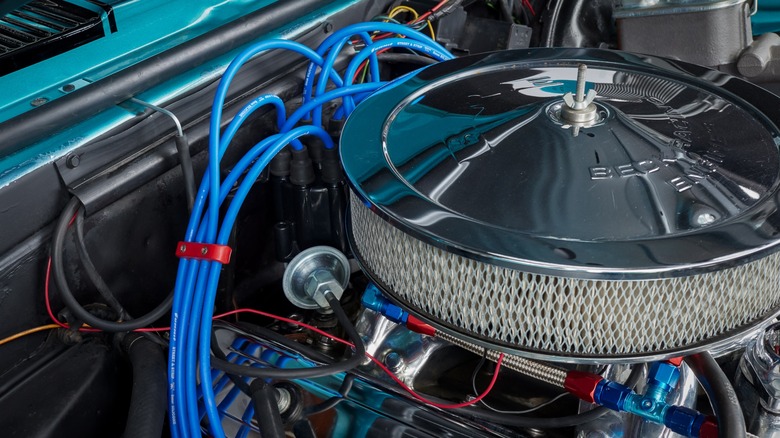When Normal Motors launched the Excessive Vitality Ignition (HEI) distributor within the mid-Seventies, it was revolutionary. A lot in order that it nonetheless has a powerful following amongst right this moment’s sizzling rodders. Like different improvements from that oil crisis-era, improved gasoline economic system was an enormous concern. On the similar time, emissions requirements had been tightening (hey, catalytic converters) and the HEI ignition’s highly effective spark improved combustion for a clear burn of leaner gasoline mixtures. However we all know what you are considering: Saving the planet apart, does HEI’s increased spark voltage and longer length really ship a significant horsepower bump versus antiquated factors ignition?
There is not any query that the breaker level, or simply “factors,” ignition system was getting lengthy within the tooth by the point the HEI distributor debuted. Factors had been round for the reason that flip of the twentieth century and powered hundreds of thousands of engines, however not with out sure drawbacks. Debating the perceived shortcomings of factors could possibly be the topic of a complete article, however the Cliffs Notes model is that factors use a ballast resistor to decrease a typical 12-volt electrical system all the way down to about 8 volts. That is to keep away from untimely put on on the factors themselves however on the expense of lowered power to the spark plugs. Regardless of, as a result of factors nonetheless put on out and require periodic adjustment or alternative, with fluctuating ignition timing within the cut price.
The swap has some pitfalls
In distinction to factors, HEI ignition is significantly extra maintenance-free. The duty beforehand completed by fragile factors is taken over by a dependable solid-state digital module that may settle for a full 12 volts of energy. Additionally, there is no exterior ignition coil like with a factors distributor. As a substitute, it is constructed into the HEI distributor’s cap, making for a easy set up. Now can be a great time to say that in case you’re making the swap to HEI, ensure to not join your new distributor to the ballasted resistor wire which powered the previous factors distributor as a result of that is a fast path to a horrible operating engine. And sure, individuals really make this error.
You will additionally wish to confirm that the HEI distributor’s bigger distributor cap and internalized parts will bodily match between your engine and firewall. Alternatively, examine the clearance to belt-driven equipment like an alternator if the distributor is front-mounted. Talking of front-mounted distributors, GM could have developed HEI, but it surely’s now out there within the aftermarket to suit different makes like Ford and Mopar.
Now for the precise dyno checks
Now, does swapping from factors to an HEI distributor make horsepower that you’re going to really really feel within the “seat of your pants?” Some time again, Sizzling Rod Journal did a head-to-head comparability of distributors utilizing a modified 350-cubic inch small-block Chevy because the take a look at mule. This shootout went down at Westech Efficiency, which is extremely prescient of the recently-defunct “Engine Masters” present hosted by Steve Dulcich, Steve Brule, and David Freiburger of Roadkill fame.
On the dyno, the factors distributor made 444.8 horsepower, whereas a very inventory Normal Motors HEI produced 446 horsepower. Lastly, an aftermarket model of the HEI from Efficiency Distributors — a enterprise that is nonetheless thriving right this moment — made 452.8 horsepower. For the mathematically challenged, that is an eight horsepower bump over factors.
A basic rule of thumb for road automobiles is that each 10 further horsepower will decrease your 1/4 mile time by roughly 0.10 (1/10 of 1 second). That is nothing to sneeze at, however will you actually be capable of inform the distinction cruising round city? Heck, no. That mentioned, you will scale back your upkeep necessities by swapping from factors to a performance-oriented HEI distributor. Plus, driving traits shall be extra constant over the lengthy haul due to HEI’s dependable solid-state parts.

